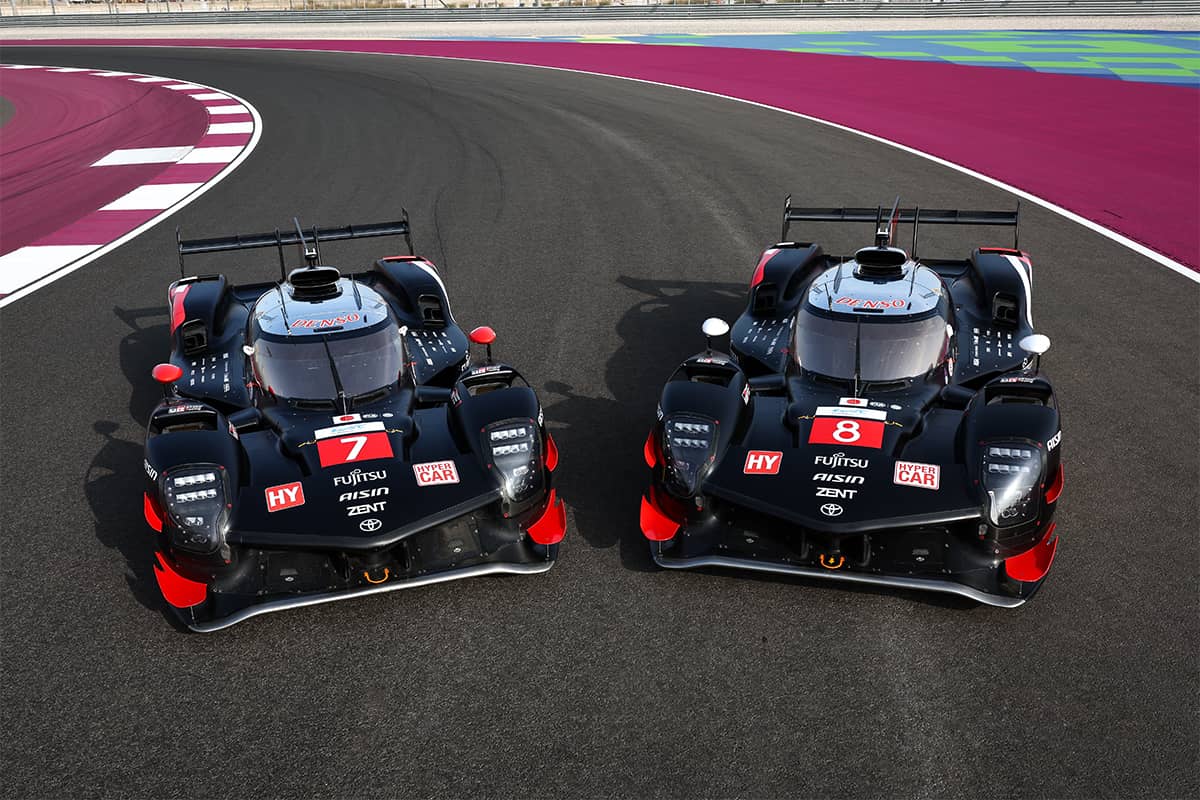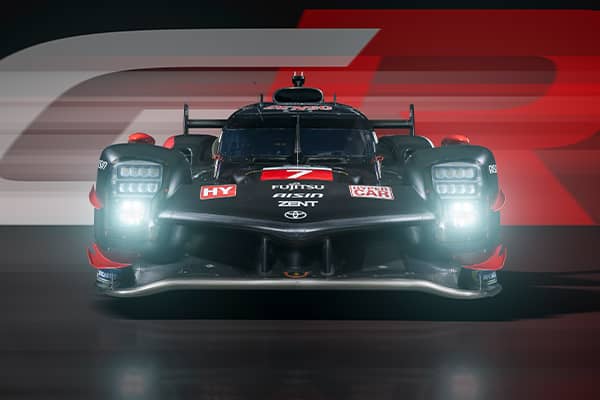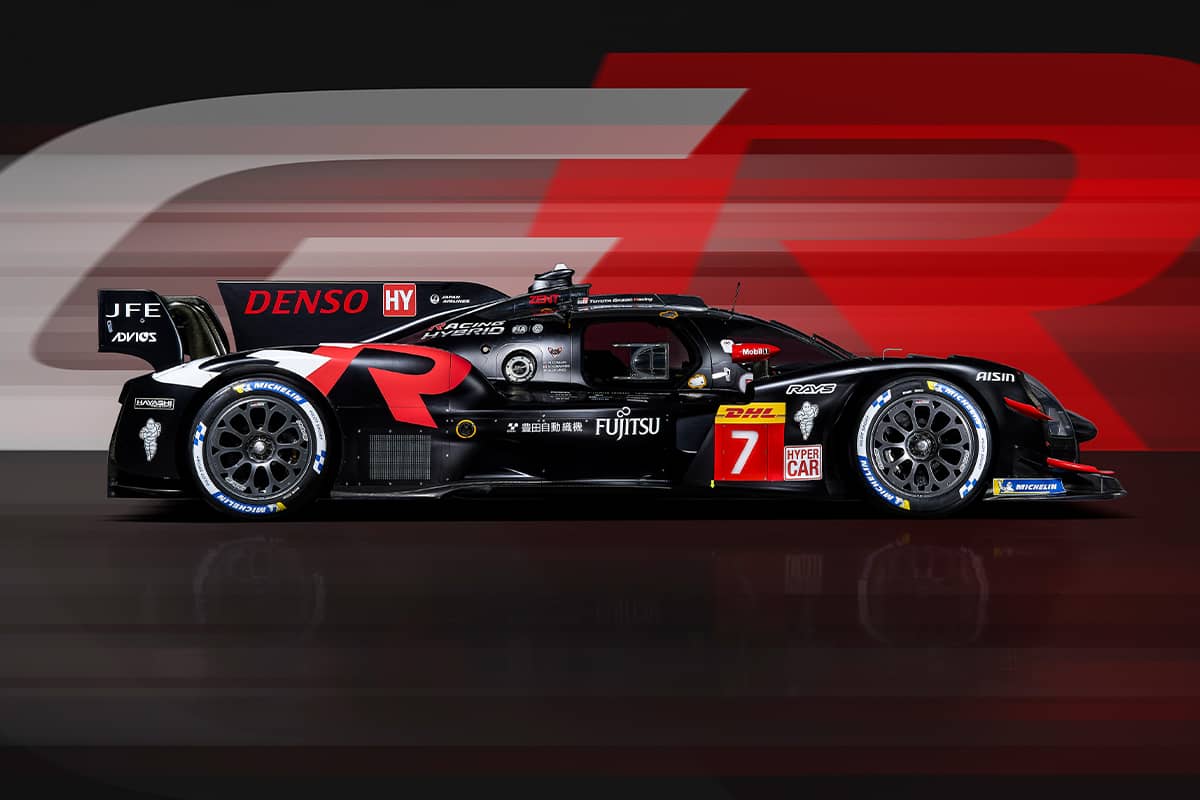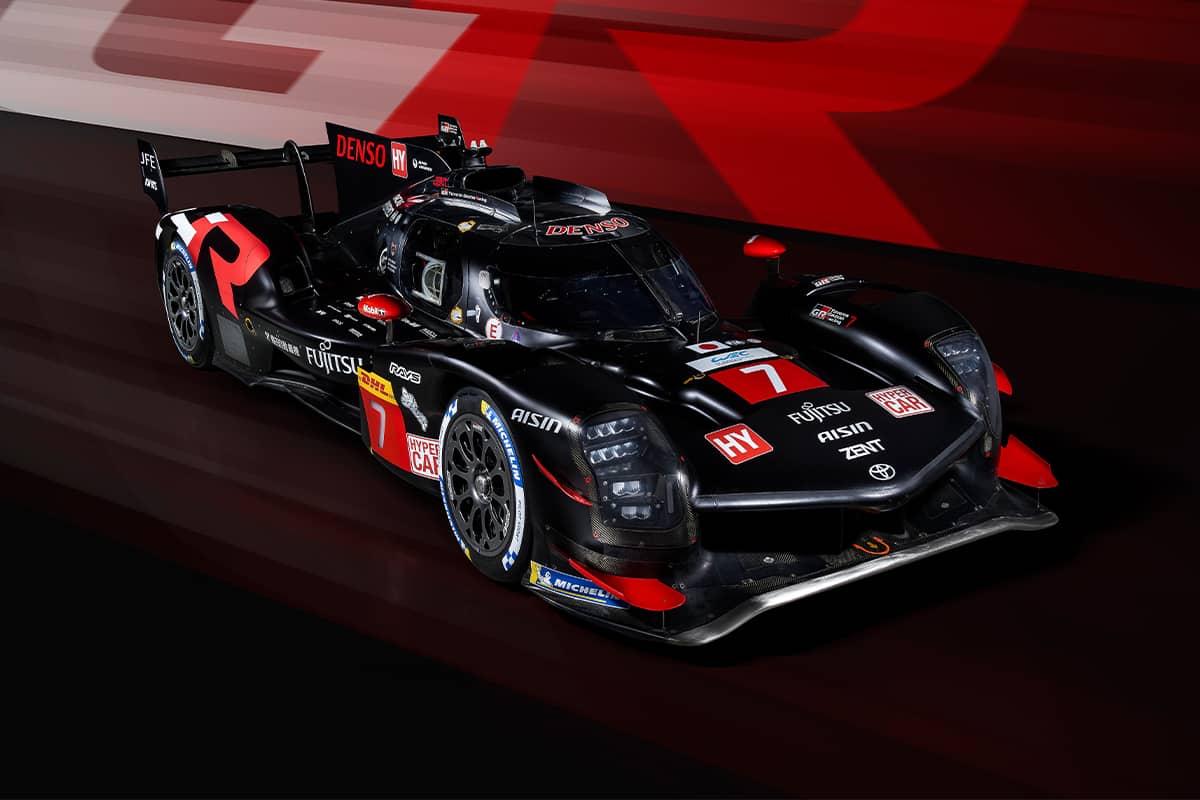INTRODUCING THE GR010 HYBRID.
The “GR010 HYBRID” enters its fifth and final year of development restrictions
The GR010 HYBRID, which debuted in the 2021 from TOYOTA GAZOO RACING for entry in the WEC (World Endurance Championship) Hypercar class, succeeded in winning three consecutive Drivers championship and Manufactures championship titles up until 2023. However, in 2024, although TGR managed to win its 4th consecutive the inaugural year of the Hypercar class, Manufactures’ championship title, it fell behind the rivals in the Drivers championship.
The sporting regulations of the WEC Hypercar class specifies that the basic components of newly developed cars cannot undergo further revisions for a period of five seasons (referred to as a homologation cycle). For the GR010 HYBRID, which debuted in 2021, the 2025 season marks the fifth season, which means that few improvements have been made in the 2025 model GR010 HYBRID compared to the of the 2024 model. In contrast, however, cars of the rival carmakers that entered the Hypercar class in 2022 or later were able to develop their cars with the latest technologies and knowledge available. In order to compete against new rivals like these as the oldest entrant in the Hypercar class, the GR010 HYBRID’s development team has concentrated on making improvements aimed at machine maturation centered around improving things like reliability, within the limited development areas where revisions are allowed, with the aim of winning another consecutive Manufacturers’ title like last year, as well as winning back the Drivers championship title.
As with last year, all cars competing in the Hypercar class are subject to so-called BoP (Balance of Performance) performance adjustments. The BoP adjustments are based on performance parameters including minimum chassis weight, maximum power output usable at speeds up to 250 km/h, the amount of “power gain” available at speeds over 250 km/h expressed in terms of percentage, and the amount of energy used in the course of one stint. It is planned to have this BoP revised sequentially based on analysis of data from the latest three races since the series opening round, excluding the 24 Hours of Le Mans.
The 2025 model GR010 HYBRID adopts almost the same exterior appearance as the 2024 model, with the exception of the side pod, which due to a new regulation must now feature an additional LED panel, which brings change from the 2024 model. This LED panel is not a feature that effects the car’s performance, but instead it displays information such as the car’s place in the race order and pit stop timing, so it is visible externally to make the race progress easier to grasp.
With these efforts toward further refinement and maturation by achieve the highest achievable levels of reliability and stability, the GR010 HYBRID now enters the fifth and final season of its homologation cycle. Its goals for this season are to win back the Drivers championship title, to claim its seventh consecutive Manufacturers’ title, and take the overall win at the 24 Hours of Le Mans for the first time in three years since its last win in 2022.
VEHICLE SPECS
| Bodywork | Carbon fibre composite |
|---|---|
| Gearbox | Transversal with 7 gears sequential |
| Driveshafts | Constant velocity tripod plunge-joint driveshafts |
| Clutch | Multidisc |
| Differential | Mechanical locking differential |
| Suspension | Independent front and rear double wishbone, pushrod-system |
| Springs | Torsion bars |
| Anti roll bars | Front and rear |
| Steering | Hydraulically assisted |
| Brakes | Akebono mono-block alloy callipers with carbon ventilated discs |
| Rims | RAYS magnesium alloy, Front: 12.5 x 18 inch Rear: 14 x 18 inch |
| Tyres | Michelin radial Front: 29/71-18 Rear: 34/71-18 |
| Length | 4900 mm |
| Width | 2000 mm |
| Height | 1150 mm |
| Weight | 1040kg |
| Fuel capacity | 90 litres |
| Engine | V6 direct injection twin-turbo |
| Valves | 4 per cylinder |
| Engine capacity | 3.5 Litre |
| Fuel | Petrol |
| Engine power | 520 kW / 707PS |
| Hybrid power | 200 kW / 272PS |
| Battery | High-powered TOYOTA lithium-ion battery |
| Front motor/Inverter | AISIN / DENSO |





